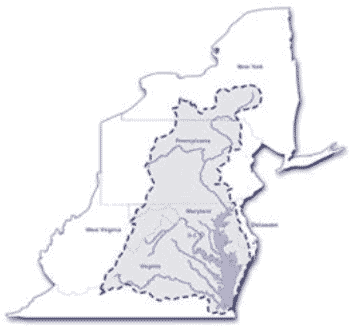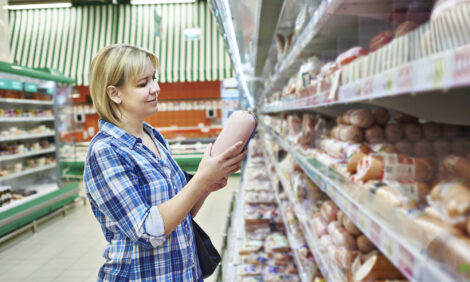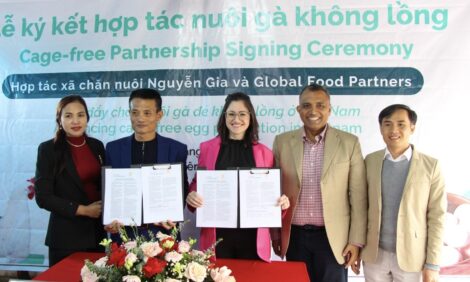



US Chicken Industry Committed to Environmental Protection
The National Chicken Council of the US has published a statement highlighting how the chicken industry in the Chesapeake Bay region – indeed, across the country – has shown commitment to environmental protection. The industry on the Delmarva Peninsula (comprising the states of Delaware, Maryland and Virginia) has been under particular scrutiny in a recent court case over the scale of its contribution to pollution in the Chesapeake Bay.The broiler chicken industry in the United States is firmly committed to the protection of the environment – the air, land and water. The industry spends millions of dollars per year on all aspects of environmental protection and works closely with the farmers who raise chickens to assist them in proper environmental management.

The Chesapeake Bay watershed is home to 14 million people; millions of lawns and thousands of golf courses, parks and other outdoor places that are frequently fertilised; more than 80,000 farms other than poultry operations that use fertiliser of all types, including animal manure; more than 300 municipal sewage systems, nearly all of which discharge treated effluent into tributaries of the Bay and many of which discharge raw sewage during overload periods; and many other sources of pollution.
There is little question that the principal factors behind the degradation of Bay waters are the growing human population. Air pollution that is responsible for about one-third of nitrogen in the Chesapeake Bay; and the diverse, enormous economy of the Bay watershed. Quoting from a US Geological Survey report, 'Increasing human populations and the associated land-use changes continue to be the primary factors causing water quality and habitat degradation in the Bay and its watershed'. The Bay watershed includes such major population centres as Richmond, the Washington metropolitan area, Baltimore and Harrisburg, Pennsylvania.
It should be noted that while nine major river basins provide fresh water to the Chesapeake Bay, only one – the Choptank – flows through Maryland's Eastern Shore, where the poultry industry is prominently represented. And the Choptank, according to the US Geological Survey, 'contributes less than one per cent of the stream-flow, the total nitrogen load and the total phosphorus load delivered annually from the non-tidal part of the Chesapeake Bay Basin'. By far the largest source of fresh water to the Bay is the Susquehanna River, which drains an area in which the chicken industry is a relatively small player.
* "To single out the broiler industry as the 'bad guy' in the Chesapeake Bay region is simplistic and sensationalistic and not based on the facts." |
The poultry industry already is operating under significant federal and state regulatory and permitting systems. The industry and individual companies have also launched important environmental initiatives. These include the Perdue AgriRecycle plant in southern Delaware, operated by Perdue Farms, which collects chicken manure/litter and processes it into pelleted organic fertiliser.
The poultry industry is doing its part to help protect the natural environment in which it operates. To single out the broiler industry as the 'bad guy' in the Chesapeake Bay region is simplistic and sensationalistic and not based on the facts.
One particularly notable 'factoid' that is often cited is the claim that the chicken industry in the Delmarva region produces 1.5 billion pounds of manure per year. This is the theoretical output – so to speak – of about 571 million birds. But most of the manure, and the litter that goes with it, is applied to the land, according to state-sanctioned nutrient management plans, and stays there, with its nitrogen and other nutrients taken up by the plants that grow in the fields. Also present on the Delmarva Peninsula is the poultry company-endorsed practice of recycling the manure/litter in the chicken houses between flocks, meaning less needs to be removed and land-applied. In contrast, the more than 300 municipal sewage systems in the Chesapeake Bay watershed, according to the Chesapeake Bay Foundation, produce an astounding 1.5 billion gallons of treated wastewater per day and dump it into the tributaries of the Chesapeake Bay. The nitrogen and other pollutants in the discharge immediately become part of the Bay's ecosystem and eventually enter its water column. What the Bay needs is better sewage treatment, not fewer chicken farms.
Here are some specific points about the industry's commitment to environmental protection and its role in the Chesapeake Bay region in particular.
* "What the [Chesapeake] Bay needs is better sewage treatment, not fewer chicken farms" |
Poultry Growers (Farmers)
Poultry growers in Delaware, Maryland, and Virginia have had state nutrient management laws for at least ten years; laws that are among the strictest in the nation. Farmers and chicken growers on the Delmarva Peninsula are limited on how many nutrients they can apply to their land; a limitation that does not exist for homeowners.
The new US Environmental Protection Agency (EPA) Concentrated Animal Feeding Operation (CAFO) rule has added a new level of regulation to farms that already have been operating under state laws.
Producers follow environmental best practices, including building and using manure sheds and installing concrete pads at the end of poultry houses to contain litter.
The Vegetative Environmental Buffers programme operated by Delmarva Poultry Industry, Inc., works with poultry producers to install vegetative buffers to capture air emissions from chicken houses, to take up nutrients in the soil near chicken houses, and to conserve energy through shade in the hot weather and blocking cold winds in the winter. The majority of the costs of the DPI Vegetative Environmental Buffers programme is paid by the four chicken companies and has been since its inception three years ago.
Poultry growers follow environmental best practices and have spent millions of dollars to install environmental and stewardship improvements on their farms, such as manure storage structures, carcass composters, concrete pads to protect high-use area and contain litter. Consequently, the contention that huge amounts of poultry manure are 'washing' into the Bay is simply wrong.
Poultry growers on the Delmarva Peninsula have requirements to attend continuing education courses related to nutrient management practices.
Poultry Companies
* "Every day is Earth Day for America's chicken industry" |
Poultry companies are voluntarily formulating feed with ingredients (such as phytase) that reduce the phosphorus levels in the litter.
They have helped pay for products used in chicken houses to reduce the formation of ammonia and to help bind phosphorus in the litter that might later be land applied.
The chicken companies will not provide birds to growers unless they are in compliance with local, state and federal environmental laws and the companies work to help make sure the growers are in compliance.
Chesapeake Bay 'Clean Bays' Initiative is an historic agreement (September 2006) between Perdue Farms and the EPA setting up a programme to minimise the environmental impact of poultry farms on the Chesapeake Bay and coastal bays around the Delmarva Peninsula. Information gathered from the pilot programme was used to develop a company-wide environmental management program for contract farms throughout the company in 2008.
P.I.N.E. (Poultry Integrators' Nutrient Effort) project is a co-operative agreement between non-profit Delaware Center for the Inland Bays and the poultry industry focusing on Delaware's Little Assawoman Bay watershed to accelerate compliance, best management practices and nutrient management certification and create a 'model watershed' concept.
Role of Agriculture and Role of Urban/Suburban Areas
According to a March 2009 report from the EPA ('Bay Barometer: A Health and Restoration Assessment of the Chesapeake Bay and Watershed in 2008'), agriculture is making progress in reaching goals for the reduction of nitrogen and phosphorus while urban and suburban areas are woefully short of the goals. The report says, 'Human development, ranging from small subdivisions to large cities, is a major source of pollution for the Chesapeake. In fact, because of the region's continued population growth and related construction, run-off from urban and suburban lands is the only source of pollution that is increasing'.
As the Chesapeake Bay Commission (established by the legislatures of Virginia, Maryland and Pennsylvania), put it, 'Why are these water quality goals so elusive? For one thing, progress is often eclipsed by an ever-growing population in the watershed and increasing land development. While the watershed's population grew by eight per cent between 1990 and 2000, impervious surfaces (areas covered by pavement and roof-tops) grew by a whopping 41 per cent'.
Poultry Litter
When official sources mention animal manure as a source of pollution to the bay, they are referring to all types of livestock (dairy cattle, beef cattle and pigs) as well as poultry. The amount of manure produced by the broiler chicken industry is frequently exaggerated by including litter – the wood shavings and other organic matter used as bedding material in chicken houses.
Poultry litter is a natural fertiliser resource, which has a value to poultry producers who sell it to crop producers or use it on their own farmland, applied according to crop needs and regulated through nutrient management plans. On the Delmarva Peninsula, litter is often moved to farmland that is farther inland and farther away from the waters of the Bay.
Poultry litter consists mostly of sawdust or wood shavings. When applied to the land, it is mostly organic matter that enhances the sandy soils of the Delmarva Peninsula, increasing their capacity to hold and filter water while providing nutrient benefits to plants.
Poultry companies are working to improve the use of nutrients by the chickens, thus reducing the amount of nitrogen and phosphorus in the manure/litter.
Sources
Bay Barometer: A Health and Restoration Assessment of the Chesapeake Bay and Watershed in 2008. Environmental Protection Agency. [click here]
Chesapeake Bay Foundation reports on sewage treatment plants [click here]
Chesapeake Bay Commission Annual Report 2008 Monitoring Nutrients in the Major Rivers Draining to Chesapeake Bay, US Geological Survey.
April 2009









